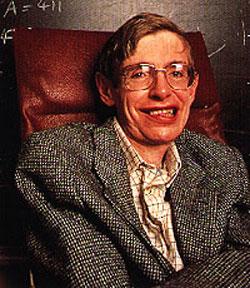The History of Black Holes December 9, 2009
Posted by webs21 in Uncategorized.trackback
 The theory of black holes dates back to 1783 when geologist John Michell wrote a letter to Henry Cavendish stating that he believed, in theory, black holes could exist somewhere in the universe. At this time though, the world of science called this theoretical place a dark star. Later on, Pierre-Simon Laplace supported Michell’s idea is his book Exposition du système du Monde translated as The System of the Worldly which was published in 1796. The basic idea of black holes and their nature would go untouched for about a century before someone else would expand our understanding of this mysterious place in the universe. The century long hiatus happened because at this time people believed that light had no mass and was simply a wave which gravity would have no effect on. The main idea of Michell’s theory was that at this point, light was bent so much that it could not escape because the mass of the object was too great and the gravitational pull was larger than the escape speed of light.
The theory of black holes dates back to 1783 when geologist John Michell wrote a letter to Henry Cavendish stating that he believed, in theory, black holes could exist somewhere in the universe. At this time though, the world of science called this theoretical place a dark star. Later on, Pierre-Simon Laplace supported Michell’s idea is his book Exposition du système du Monde translated as The System of the Worldly which was published in 1796. The basic idea of black holes and their nature would go untouched for about a century before someone else would expand our understanding of this mysterious place in the universe. The century long hiatus happened because at this time people believed that light had no mass and was simply a wave which gravity would have no effect on. The main idea of Michell’s theory was that at this point, light was bent so much that it could not escape because the mass of the object was too great and the gravitational pull was larger than the escape speed of light.
In 1915, Albert Einstein came up with an idea that would revolutionize the understanding of black holes and the universe as a whole. The theory was called the Theory of Relativity. Einstein had proven in a number of experiments before 1915 that gravity does in fact have an influence on light and its motion. Once he was able to prove this fact, the idea of black holes began to gain a solid theoretical foundation. The idea was that just as the Earth is able to pull a rock back to the its surface because it has such a greater mass than the rock, there should be a object where the mass of the object is so enormous that its gravitational force bends the path of light and ultimately traps it forever.
The late 1950s and the 1960s produced some very interesting discovers that would greatly affect the understanding of black holes. In 1958, David Finkelstein came up with the idea of the event horizon in a black hole. The theorists before him had said that black holes were merely singularities. He was able to prove that there was a specific point where light ceases to escape but instead of being a point it was more of a membrane or boundary. Until 1963, scientists thought that black holes did not rotate. Roy Kerr was the first to prove that the singularity of a black hole was not a point but a rotating ring. Roger Penrose then came along and was able to prove that every black hole had a singularity. John Wheeler is given credit for coining the term black hole in a speech he gave in 1967.
Stephen Hawking was the next great theorist in black holes. In 1974, he stated that through his calculations and tests, he believed that black holes actually emit tiny amounts of thermal radiation. Many other scientists have been able to test Hawking’s claim since then and they all agree with the theory. This radiation is often referred to as Hawking Radiation. The startling thing about this theory is if black holes do emit radiation, they then have to be losing mass. This constant loss of mass would then eventually cause the black hole to evaporate.
In recent years, Stephen Hawking has been able to study black holes extensively but has suffered from a severe form of ALS that affects his spinal cord and caused him to lose his vocal capabilities. He is often renowned as the best modern scientist of our time. Through more careful observation of potential black hole sites, people like Stephen Hawking and those who come after him will have more evidence to look at and hopefully be able to fully understand the nature of these mysterious objects.
Comments»
No comments yet — be the first.